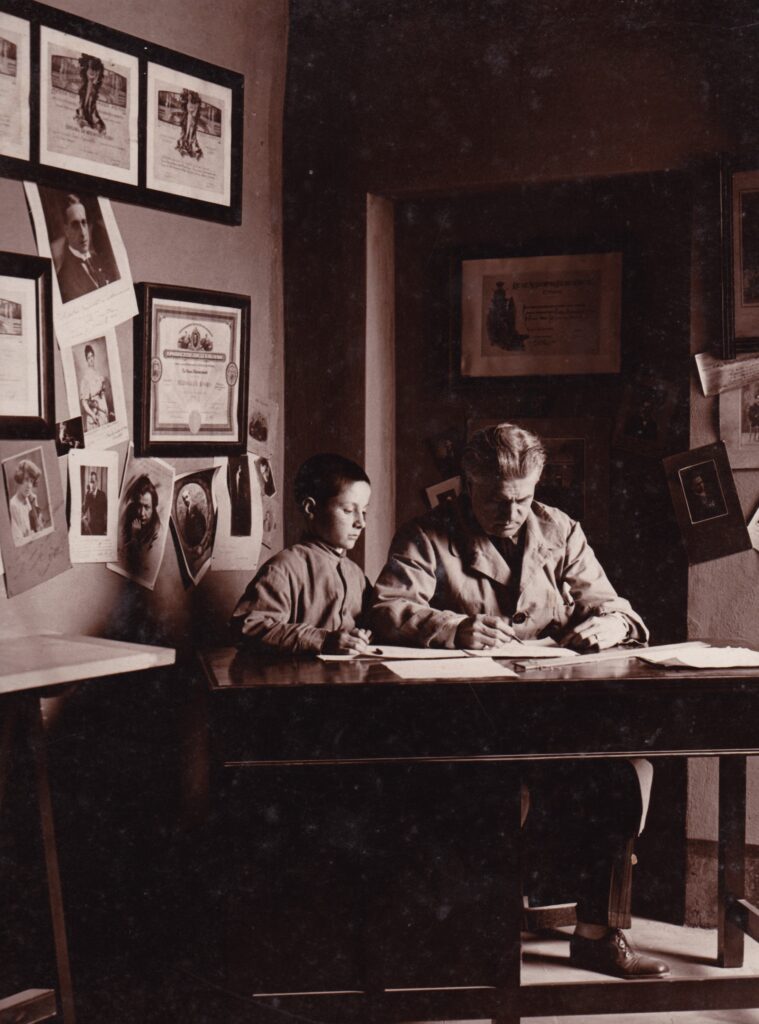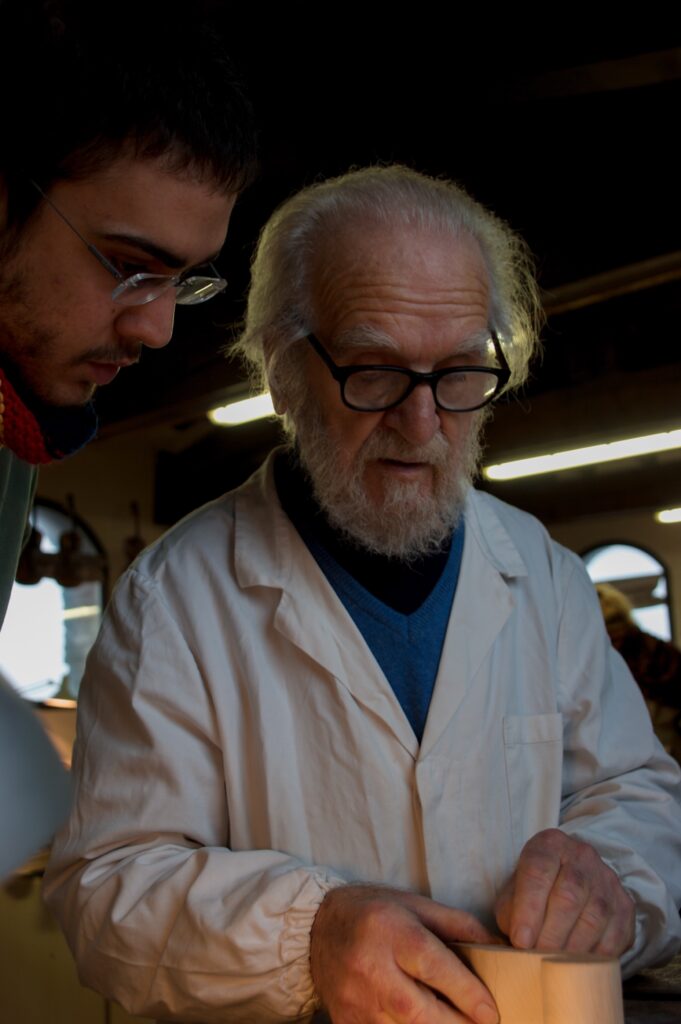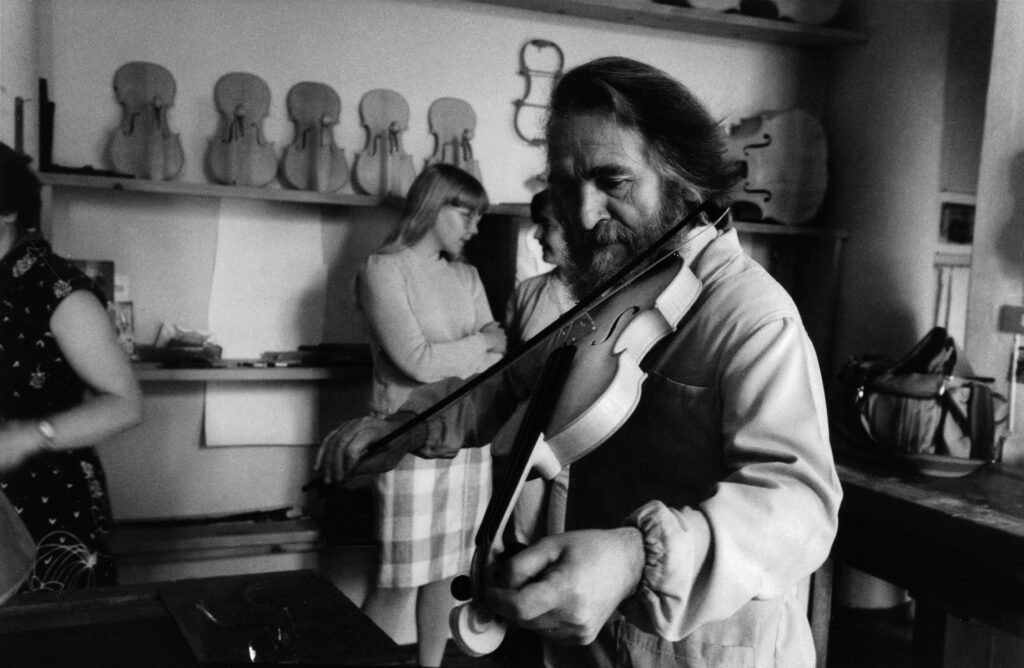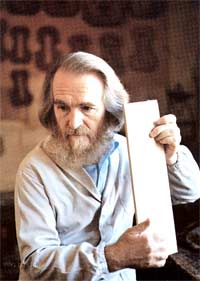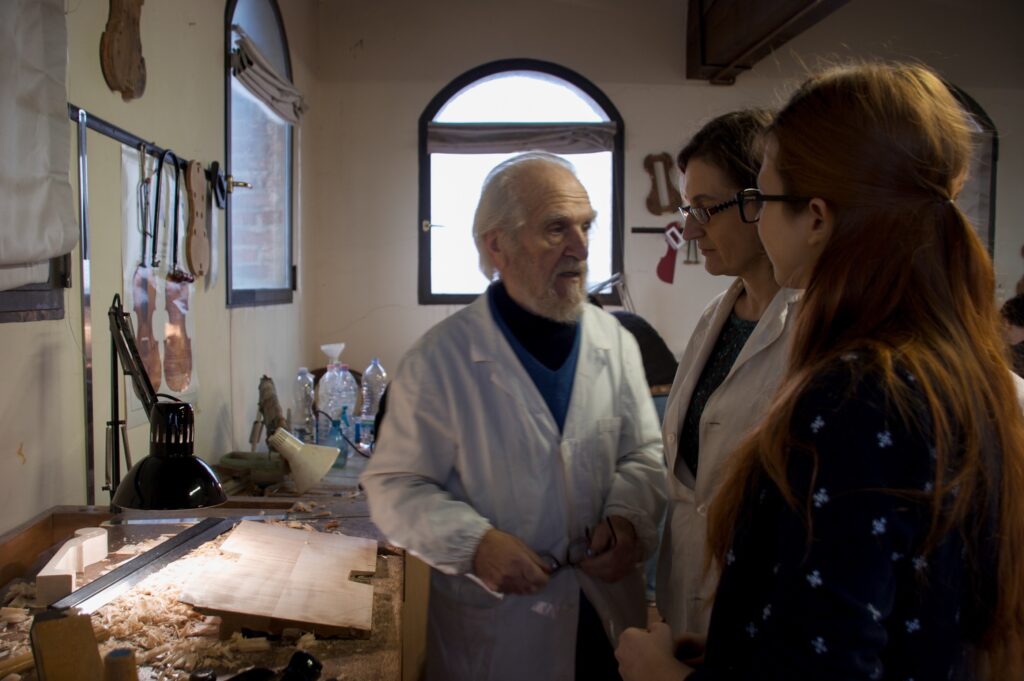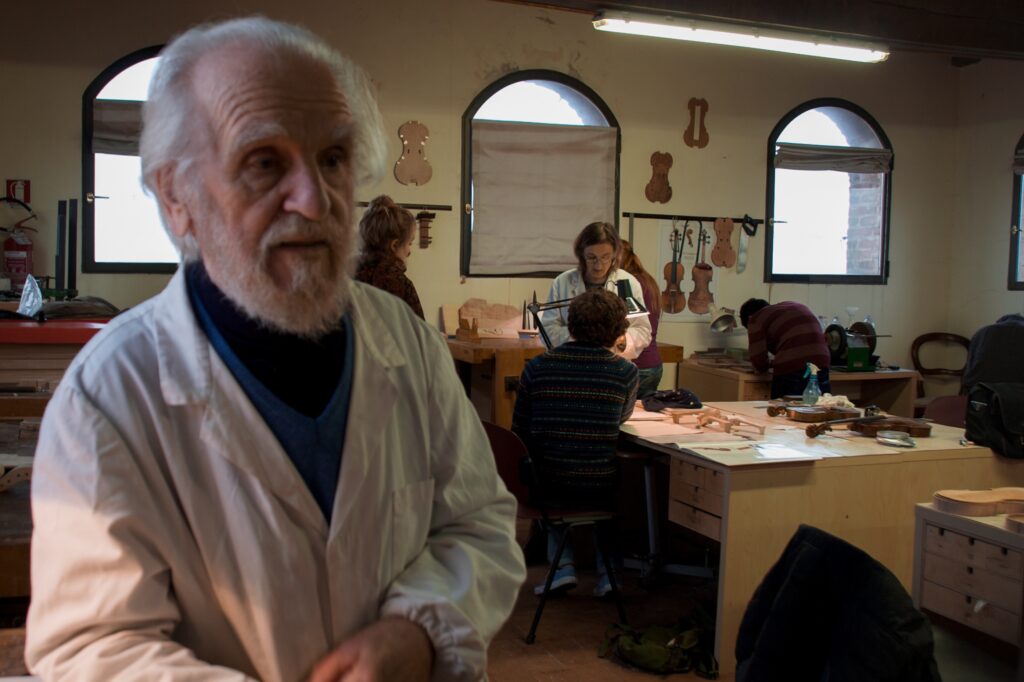THE HISTORY
The International School of Violin Making in Parma was born, in its current structure, in 1975 thanks to the initiative of then-Conservatory President Giorgio Paini, who promoted its establishment and called Renato Scrollavezza to direct its courses.
Scrollavezza often recounted his initial reluctance in the face of the new prospect: although he could boast, at almost fifty years of age now, a series of prestigious awards, he felt intimidated in the face of the responsibility that lay before him.
It then took only a short span of time for him to realize that he had made the right choice, as he recalled in the volume dedicated to the School: “I realized that passing on my experience and knowledge to others was a vocation in which I was completely fulfilled.”
The Master’s enthusiasm and natural charisma ensured that most of the School’s students, upon completion of their course of study, succeeded in establishing themselves in the profession, often winning prestigious awards in Italy and abroad.
The Parma School drew students from all over Europe, the United States, the Far East and Israel, so that the facility had to cope with a quantity of requests that often exceeded the number of available places.
Meanwhile, Scrollavezza also made a decisive contribution to the founding of the Civica Scuola di Liuteria in Milan, where he taught from 1979 to 1983. Pressured by too many commitments, he then decided to leave the additional task in the Lombard city to one of his first students, Luca Primon. Today the Civica Scuola di Liuteria in Milan has also become, thanks to the commitment of those who have worked there, a reality of international prestige, which naturally shares more than a distant kinship with Parma.
In 1992, the Ministry of Education decided to close the chair of violin making despite the School’s contribution to the Parma Conservatory in the seventeen years of courses, both in terms of prestige and by providing about one hundred instruments including violins, violas and cellos. Again it was Giorgio Paini who saved the institution, earning it the support and hospitality of C.I.R.P.e.M (International Center for Research on Musical Periodicals).
Since 1996, the School of Violin Making came under the auspices of Ecipar, a training institution linked to the National Confederation of Craftsmen.
Beginning in 2001, a series of initiatives were again put in place to ensure a more stable future for the institution: the alumni trained in Parma over the previous decades formed a cultural association aimed at supporting and popularizing their tradition: Liuteria Parmense.
Since its founding, the association has seen among its fundamental objectives the support of the International School of Violin Making in Parma, which it has managed ever since, arriving in 2006 at its current location inside the Castle of Music in Noceto thanks to the decisive intervention of the Municipal Administration and Mayor Fabio Fecci. Alongside the School of Violin Making, now known as the Scrollavezza Academy, the Castle houses a permanent collection of the Maestro’s instruments and a record collection by journalist and music enthusiast Bruno Slawitz.
The Parma School therefore celebrated in 2025 its 50th anniversary of uninterrupted activity since its founding, moreover building on an earlier experience born within the Parma Conservatory in the late 1920s.
In 1929, in fact, the well-known Vicenza luthier Gaetano Sgarabotto had opened in Parma what is remembered as the first public luthiery course in Italy, with the support of Podestà Mario Mantovani and Conservatory Director Guglielmo Zuelli.
Gaetano Sgarabotto’s son Pietro, also an esteemed violin maker, assisted his father in teaching until the closing of the courses in 1937, which was a year’s prelude to the opening of the Cremona School in 1938. Pietro Sgarabotto also played an important role in the latter institution, of which he became in 1958 the first qualified teacher able to pass on Italian violin making in a manner consistent with its tradition.














